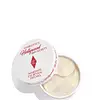What's inside
What's inside
 Key Ingredients
Key Ingredients

 Benefits
Benefits

 Concerns
Concerns

 Ingredients Side-by-side
Ingredients Side-by-side

Water
Skin ConditioningGlycerin
HumectantChondrus Crispus Powder
AbrasiveCalcium Chloride
Astringent1,2-Hexanediol
Skin ConditioningButylene Glycol
HumectantCeratonia Siliqua Gum
EmollientHydroxyacetophenone
AntioxidantPentylene Glycol
Skin ConditioningXanthan Gum
EmulsifyingPolyglyceryl-10 Laurate
Skin ConditioningPhenoxyethanol
PreservativeAllantoin
Skin ConditioningEthylhexylglycerin
Skin ConditioningSynthetic Fluorphlogopite
Sodium Phytate
Parfum
MaskingTin Oxide
AbrasiveCI 77891
Cosmetic ColorantPropanediol
SolventHydroxyethylcellulose
Emulsion StabilisingIpomoea Batatas Root Extract
Skin ConditioningColeus Forskohlii Root Extract
EmollientTrehalose
HumectantUrea
BufferingSerine
MaskingMicrococcus Lysate
Skin ConditioningAlgin
MaskingCaprylyl Glycol
EmollientDisodium Phosphate
BufferingGlyceryl Polyacrylate
Potassium Phosphate
BufferingPullulan
Sodium Hyaluronate
HumectantWater, Glycerin, Chondrus Crispus Powder, Calcium Chloride, 1,2-Hexanediol, Butylene Glycol, Ceratonia Siliqua Gum, Hydroxyacetophenone, Pentylene Glycol, Xanthan Gum, Polyglyceryl-10 Laurate, Phenoxyethanol, Allantoin, Ethylhexylglycerin, Synthetic Fluorphlogopite, Sodium Phytate, Parfum, Tin Oxide, CI 77891, Propanediol, Hydroxyethylcellulose, Ipomoea Batatas Root Extract, Coleus Forskohlii Root Extract, Trehalose, Urea, Serine, Micrococcus Lysate, Algin, Caprylyl Glycol, Disodium Phosphate, Glyceryl Polyacrylate, Potassium Phosphate, Pullulan, Sodium Hyaluronate
Water
Skin ConditioningGlycerin
HumectantCyclopentasiloxane
EmollientDipropylene Glycol
HumectantDimethicone
EmollientCyclohexasiloxane
EmollientYeast Extract
Skin ConditioningSodium Hyaluronate
HumectantCeramide EOP
Skin ConditioningCeramide Eos
Skin ConditioningCeramide AP
Skin ConditioningCeramide NP
Skin ConditioningCeramide Ns
Skin ConditioningSambucus Nigra Fruit Extract
AstringentHydrolyzed Silk
HumectantSodium PCA
HumectantTocopherol
AntioxidantAscorbyl Palmitate
AntioxidantCaprooyl Phytosphingosine
Skin ConditioningCaprooyl Sphingosine
Skin ConditioningSaccharide Isomerate
HumectantSaccharomyces/Magnesium Ferment
Saccharomyces/Iron Ferment
Skin ConditioningSaccharomyces/Copper Ferment
Skin ConditioningSaccharomyces/Silicon Ferment
Skin ConditioningSaccharomyces/Zinc Ferment
Skin ConditioningOlea Europaea Leaf Extract
PerfumingMethyl Gluceth-20
HumectantEthylhexylglycerin
Skin ConditioningLauryl PEG-9 Polydimethylsiloxyethyl Dimethicone
Skin ConditioningCholesterol
EmollientSodium Chloride
MaskingSodium Citrate
BufferingCitric Acid
BufferingBehenic Acid
CleansingPropylene Glycol
HumectantCeteareth-25
CleansingButylene Glycol
HumectantDimethicone/PEG-10/15 Crosspolymer
Cetyl Alcohol
EmollientDisodium EDTA
Sodium Benzoate
MaskingPotassium Sorbate
PreservativePhenoxyethanol
PreservativeMica
Cosmetic ColorantWater, Glycerin, Cyclopentasiloxane, Dipropylene Glycol, Dimethicone, Cyclohexasiloxane, Yeast Extract, Sodium Hyaluronate, Ceramide EOP, Ceramide Eos, Ceramide AP, Ceramide NP, Ceramide Ns, Sambucus Nigra Fruit Extract, Hydrolyzed Silk, Sodium PCA, Tocopherol, Ascorbyl Palmitate, Caprooyl Phytosphingosine, Caprooyl Sphingosine, Saccharide Isomerate, Saccharomyces/Magnesium Ferment, Saccharomyces/Iron Ferment, Saccharomyces/Copper Ferment, Saccharomyces/Silicon Ferment, Saccharomyces/Zinc Ferment, Olea Europaea Leaf Extract, Methyl Gluceth-20, Ethylhexylglycerin, Lauryl PEG-9 Polydimethylsiloxyethyl Dimethicone, Cholesterol, Sodium Chloride, Sodium Citrate, Citric Acid, Behenic Acid, Propylene Glycol, Ceteareth-25, Butylene Glycol, Dimethicone/PEG-10/15 Crosspolymer, Cetyl Alcohol, Disodium EDTA, Sodium Benzoate, Potassium Sorbate, Phenoxyethanol, Mica
 Reviews
Reviews

Ingredients Explained
These ingredients are found in both products.
Ingredients higher up in an ingredient list are typically present in a larger amount.
Butylene Glycol (or BG) is used within cosmetic products for a few different reasons:
Overall, Butylene Glycol is a safe and well-rounded ingredient that works well with other ingredients.
Though this ingredient works well with most skin types, some people with sensitive skin may experience a reaction such as allergic rashes, closed comedones, or itchiness.
Learn more about Butylene GlycolEthylhexylglycerin (we can't pronounce this either) is commonly used as a preservative and skin softener. It is derived from glyceryl.
You might see Ethylhexylglycerin often paired with other preservatives such as phenoxyethanol. Ethylhexylglycerin has been found to increase the effectiveness of these other preservatives.
Glycerin is already naturally found in your skin. It helps moisturize and protect your skin.
A study from 2016 found glycerin to be more effective as a humectant than AHAs and hyaluronic acid.
As a humectant, it helps the skin stay hydrated by pulling moisture to your skin. The low molecular weight of glycerin allows it to pull moisture into the deeper layers of your skin.
Hydrated skin improves your skin barrier; Your skin barrier helps protect against irritants and bacteria.
Glycerin has also been found to have antimicrobial and antiviral properties. Due to these properties, glycerin is often used in wound and burn treatments.
In cosmetics, glycerin is usually derived from plants such as soybean or palm. However, it can also be sourced from animals, such as tallow or animal fat.
This ingredient is organic, colorless, odorless, and non-toxic.
Glycerin is the name for this ingredient in American English. British English uses Glycerol/Glycerine.
Learn more about GlycerinPhenoxyethanol is a preservative that has germicide, antimicrobial, and aromatic properties. Studies show that phenoxyethanol can prevent microbial growth. By itself, it has a scent that is similar to that of a rose.
It's often used in formulations along with Caprylyl Glycol to preserve the shelf life of products.
Sodium Hyaluronate is hyaluronic acid's salt form. It is commonly derived from the sodium salt of hyaluronic acid.
Like hyaluronic acid, it is great at holding water and acts as a humectant. This makes it a great skin hydrating ingredient.
Sodium Hyaluronate is naturally occurring in our bodies and is mostly found in eye fluid and joints.
These are some other common types of Hyaluronic Acid:
Learn more about Sodium HyaluronateWater. It's the most common cosmetic ingredient of all. You'll usually see it at the top of ingredient lists, meaning that it makes up the largest part of the product.
So why is it so popular? Water most often acts as a solvent - this means that it helps dissolve other ingredients into the formulation.
You'll also recognize water as that liquid we all need to stay alive. If you see this, drink a glass of water. Stay hydrated!
Learn more about Water